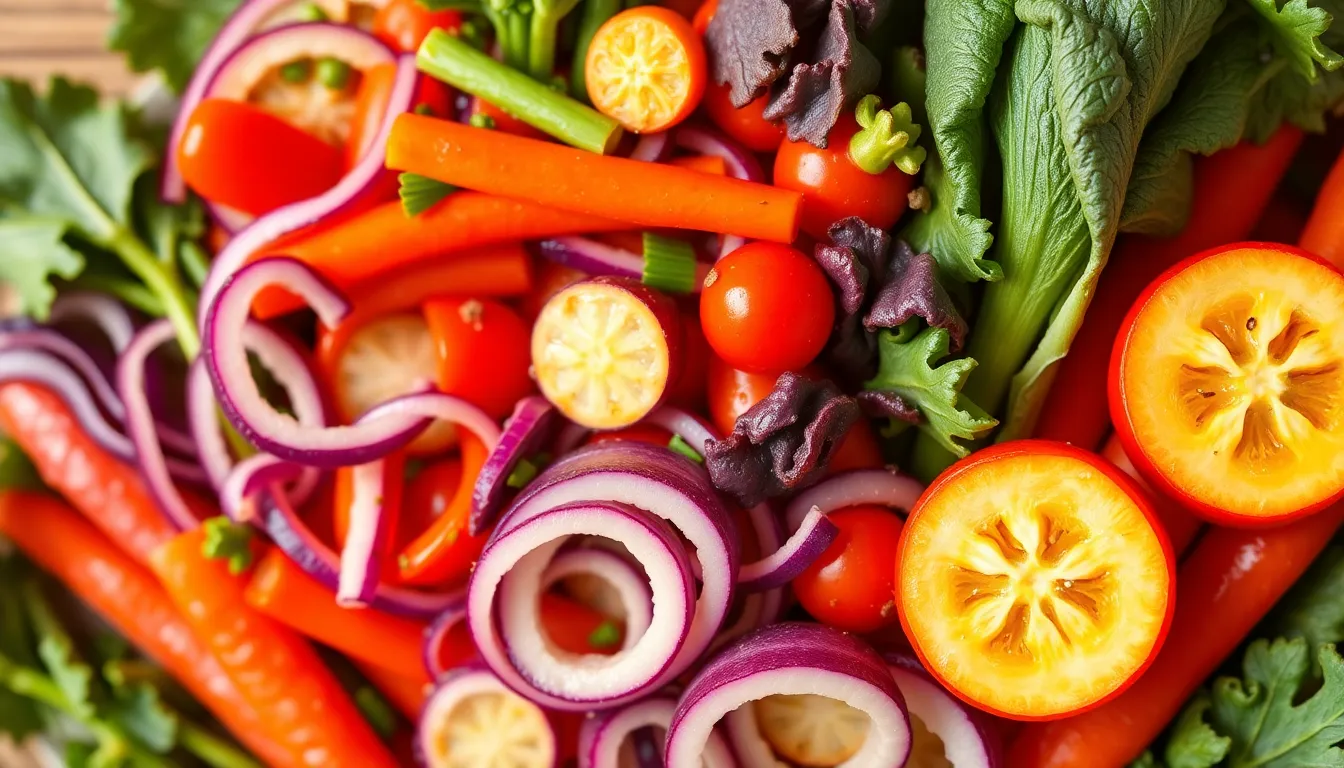Blanching for Bright Colors: How to Keep Your Veggies Vibrant
Introduction
Blanching is a cooking technique that can significantly enhance the visual appeal and nutritional value of vegetables. By briefly boiling vegetables and then plunging them into icy water, you can maintain vibrant colors, crisp textures, and essential nutrients. This method is widely favored by chefs and home cooks alike for its ability to elevate the aesthetic and nutritional profiles of various dishes.
The importance of vibrant colors in vegetables cannot be overstated; they are not only eye-catching but also indicative of the vegetable’s nutrient density. Brightly colored vegetables, such as vibrant greens or deep reds, often contain higher levels of vitamins and antioxidants. Beyond aesthetics, blanching has additional benefits such as improved texture and flavor, making it an essential technique for anyone looking to enhance their culinary creations.
Section 1: What is Blanching?
Blanching is a cooking process that involves briefly boiling vegetables and then rapidly cooling them in ice water. This technique is often used to prepare vegetables for freezing, cooking, or serving in salads and other dishes. The key steps in the blanching process include:
- Boiling water: This initial step is crucial for effectively cooking the outer layer of the vegetable.
- Ice water bath: Immediately cooling the vegetables halts the cooking process, helping to retain their color, texture, and nutrients.
Section 2: The Science Behind Blanching
Understanding the science behind blanching can help you appreciate its value in the kitchen. When vegetables are heated, their cellular structure is altered. Blanching disrupts the enzymes responsible for color and nutrient degradation, effectively inactivating them. This process not only helps to maintain the vegetable’s vibrant color but also preserves its nutritional integrity, ensuring that you retain maximum vitamins and minerals.
Furthermore, blanching can enhance the flavor of vegetables by breaking down certain compounds that may cause bitterness. The process also softens the cell walls, making the vegetables more palatable without compromising their crunch.
Section 3: The Blanching Process Step-by-Step
Step 1: Prepare Your Vegetables
Before you begin blanching, it’s essential to select the right vegetables and prepare them properly:
- Choosing the right vegetables: Opt for fresh, seasonal produce for the best flavor and color.
- Cleaning and cutting techniques: Wash the vegetables thoroughly, and cut them into uniform sizes to ensure even cooking.
Step 2: Boil the Water
Bring a large pot of water to a rolling boil. Adding salt to the water enhances the flavor of the vegetables and helps in color retention:
- Use about 1-2 tablespoons of salt per gallon of water.
Refer to the table below for recommended blanching times based on vegetable types:
| Vegetable | Blanching Time (Minutes) |
|---|---|
| Green Beans | 3 |
| Broccoli | 2-3 |
| Carrots (sliced) | 2 |
| Peas | 1-2 |
| Zucchini | 2 |
Following these recommended times is crucial for achieving the best results. Over-blanching can lead to dull colors and loss of nutrients.
Step 3: Ice Water Bath
Prepare an ice water bath by filling a large bowl with cold water and ice cubes. This will rapidly cool the vegetables and stop the cooking process:
- Once the vegetables are done blanching, transfer them directly into the ice water.
- Let the vegetables cool for the same amount of time they were blanched, or until they are completely chilled.
Section 4: Tips for Perfectly Blanched Vegetables
To achieve perfectly blanched vegetables, consider the following tips:
- Using fresh, seasonal vegetables: Fresh produce not only looks better but also tastes better and contains more nutrients.
- Avoiding overcooking: Watch for signs of over-blanching, such as dull colors and mushy textures.
- Storing blanched vegetables: Allow the vegetables to drain and dry completely before storing them in airtight containers in the refrigerator or freezer for later use.
Section 5: Creative Ways to Use Blanched Vegetables
Blanched vegetables can enhance a variety of dishes. Here are some creative ideas to incorporate them into your meals:
- Salads: Toss blanched veggies with your favorite greens, nuts, and dressings for a colorful salad.
- Stir-fries: Add blanched vegetables to stir-fries for a vibrant and nutritious dish.
- Side dishes: Serve blanched vegetables as a side, drizzled with olive oil, lemon juice, and herbs.
For an added visual appeal, consider garnishing and plating your dishes thoughtfully. Use contrasting colors and textures to create a feast for the eyes.
Conclusion
In conclusion, blanching is an invaluable technique for achieving vibrant, nutritious vegetables. It enhances the appearance and flavor of your dishes while preserving essential nutrients. I encourage you to experiment with various vegetables and recipes, taking advantage of the benefits of blanching.
Have you tried blanching? What are your favorite ways to enjoy vibrant vegetables in your cooking? Share your experiences and recipes in the comments below!
Call to Action
Join the conversation on our blog! Share your blanching tips and tricks, and let’s celebrate the beauty and benefits of vibrant vegetables together!




